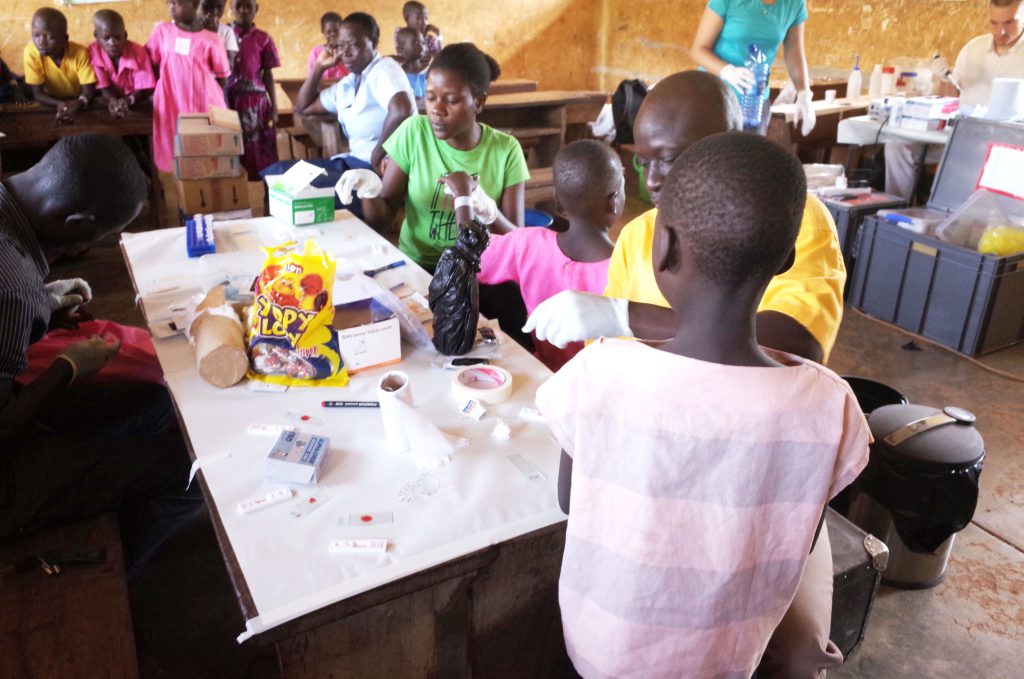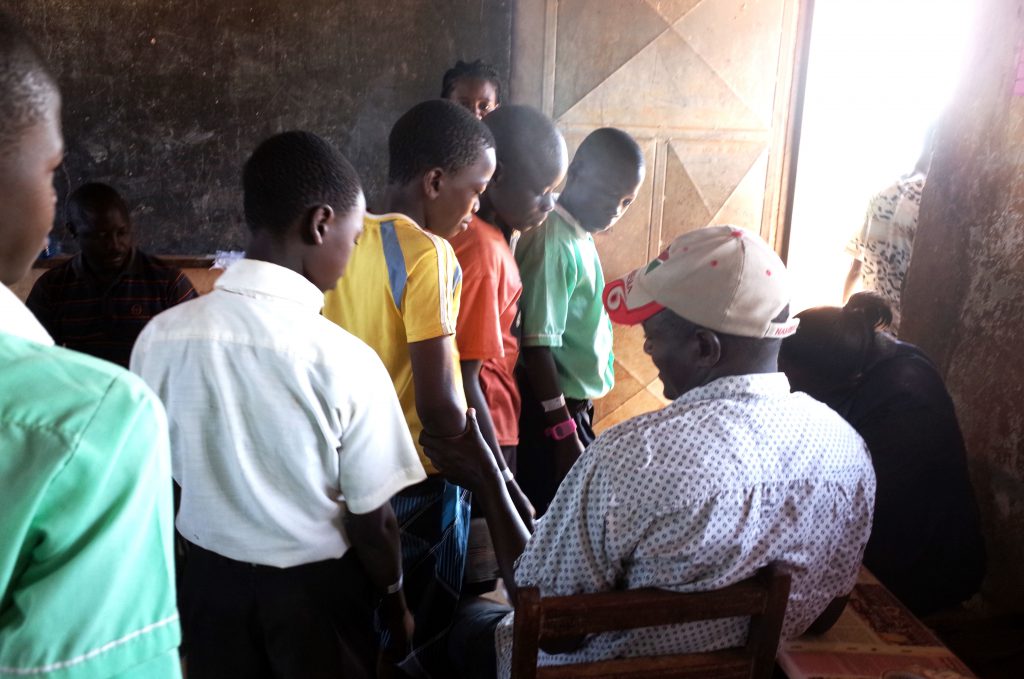Disease diagnosis in a fold of paper
Infectious diseases are a tremendous burden in vulnerable and underserved communities around the world. To treat them, and to monitor and screen at-risk communities requires low cost, sensitive, portable, and easily used diagnostics. Researchers in Professor Jonathan Cooper’s group at the University of Glasgow have a simple solution.
By Elizabeth Thomsen
Infectious diseases are a tremendous burden in vulnerable and under-served communities around the world. Diseases such as malaria and schistosomiasis infect millions, and the economic burden of these conditions can lead to a cycle of illness and poverty. To treat them, and to monitor and screen at-risk communities requires low cost, sensitive, portable, and easily used diagnostics.

Researchers in Professor Jonathan Cooper’s group at the University of Glasgow have a simple solution that doesn’t just look good on paper: it is paper. The device consists of a long piece of paper, printed with wax, with four parallel fold lines to make five squares which can fold onto each other. The sample is introduced into a glass fibre in the central square of paper, and then the paper is folded like a concertina to first extract the DNA from the sample, and then to perform reactions necessary to detect the disease. The wax on the paper allows the liquids to move around microchannels using capillary flows. This movement means no external pumps are needed. The whole process takes between 45 minutes to an hour, uses a finger-prick sized drop of sample (such as blood or semen) and results in an easy-to-read measurement similar to the lines on a pregnancy test. The tests can then be burned to dispose of the waste.
Field testing malaria detectors in Uganda
In collaboration with the London School of Hygiene and Tropical Medicine, and Drs Poppy Lamberton and Julien Reboud in Glasgow, the researchers have conducted the first in-human trial of these devices in Uganda, to test for malaria and schistosomiasis. The test was 98.2% accurate, performing excellently against alternative techniques including microscopy (86% accurate) and immunodiagnostics (82% accurate). The dual nature of the test means that whilst testing for malaria, health workers can also monitor any re-emergence of schistosomiasis. This approach saves time and allows early detection of diseases which are being eradicated, but are still present in communities.
The test can differentiate between current and historical infections (unlike many immunodiagnosis techniques), can detect asymptomatic levels of infection (allowing treatment before apparently healthy individuals infect others), and can provide species-specific information that guides therapy. Drug resistant strains of malaria are emerging in parts of south-east Asia, and researchers have now detected cases in Africa. In the future, new diagnostics for patients with drug resistant infections, including malaria, will be needed to inform treatment.
“The test was 98.2% accurate, performing excellently against alternative techniques including microscopy (86% accurate) and immunodiagnostics (82% accurate).”

Livestock health
Infectious diseases in humans are not the only source of burden for communities – the health of livestock can also have a tremendous impact. The researchers have collaborated with the Indian Veterinary Research Institute and the WHO Collaborating Centre for Brucellosis and tested their devices on three reproductive infections (Brucella, Leptospira, bovine herpes virus-1) in cattle in India. These diseases can reduce fertility, affect pregnancies, and lower milk production. The diseases can be difficult to diagnose during their early stages, meaning that an infected bull can easily spread an infection through a herd. If this occurs, the infected cattle must be destroyed, leading to disruptions in milk supply and a significant cost for the farmer.
The paper-based sensors test for all three diseases at once, and the results are as good as those from molecular diagnostic tests, which are time consuming, expensive, and need specialised facilities.

What’s next?
The tests currently need a plastic housing to prevent evaporation. Ultimately, the researchers aim to get rid of the plastic housing, and reduce the number of steps needed to allow the whole process to be performed in half an hour.
The researchers also plan to explore the links between communicable and non-communicable disease. In particular they will examine conditions such as asthma, eczema, and arthritis, along with infectious diseases, and seek to understand the effect on overall health.
Photo credit: Jonathan Cooper
